Vancouver Island Masonic History Project
As part of our Vancouver Island Masonic History Project, with its sections on Vancouver Island Cemeteries – Masonic Interments and Deceased Brethren, here is a page on Lewis Lewis (died 1904, aged 77), who is buried in the Victoria Jewish Cemetery, Victoria, B.C.
Lewis Lewis was a member of Vancouver & Quadra Lodge, No.2 in Victoria, B.C. He was a leading figure in Victoria’s Jewish community. Among other community activities, he served for eight years as President of Congregation Emanu-El, the oldest synagogue in western Canada, which provided us with the photo below.
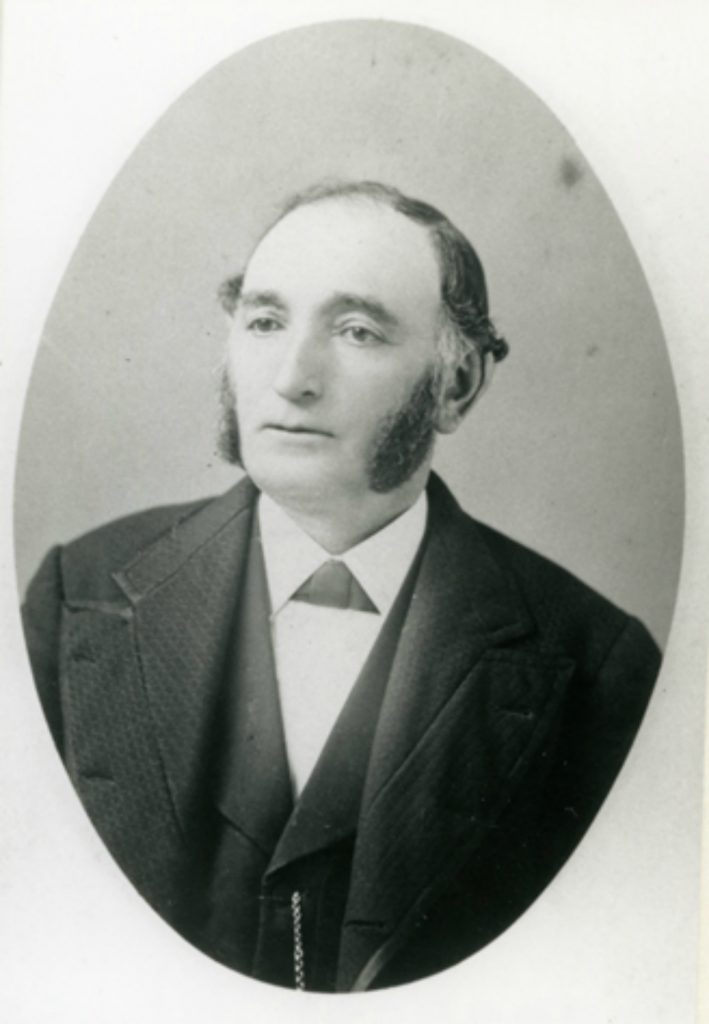
We have had correspondence with the Congregation Emanu-El historian who has told us that:
“ABOUT LEWIS LEWIS: There are a lot of myths about him. One is that he got his name because of a mix-up at immigration and his not being able to understand English. That’s wrong, on both accounts. His name on the immigration papers is listed as Lewis Jeretzky. I’m not sure when or why he changed his name, but it surely wasn’t at immigration.
The other myth is that he donated the land for the Jewish Cemetery. I’ve seen copies of the original deed and other papers relating to the early days of the Jewish Cemetery and non of them bear his name. It is true that he was very involved in the Jewish Community and an active member of the Hebrew Benevolent Society and also was on the board of the [Congregation Emanu-El] synagogue. …..
Lewis Lewis and his wife, Selina, arrived in Victoria in June 1858. From 1861 until his retirement in 1900, Lewis operated various businesses, including a dry goods store, a saloon, and a tailor shop. Lewis was a prominent citizen, affiliated with many local organizations, and was a member of the city’s first volunteer fire brigade…….”
“He was naturalized in New York in 1844 – According to his naturalization index card, from 1842 until 1848 he was living in New York at the same address, 497 Broome street, and I have a note that he was a lampmaker….
He arrived in San Francisco 31 Aug 1849. He’s in Sacramento by 1851, and is still there in the 1852-53 directory, with a note that he was formerly from New York. On 25 May 1855 he becomes a U.S. citizen, then marries Rachel Nathan on 21 Nov of the same year.”
Here is the latest research (February 2018) on Lewis Lewis from the Congregation Emanu-El Historian, reproduced here with permission:
“Lewis Lewis (1828-1904) – plot E-14 of Victoria Jewish Cemetery
Sorting out the truth from fictional accounts of early settlers to Victoria can be difficult because of a lack of documentation. Much of the information available about Lewis Lewis is contradictory, incomplete or, in some instances, false (see below). The following is my best understanding of Lewis Lewis’ biography.
Lewis Lewis was born on June 12, 1828 in the region of the Europe where the borders were fluid; Poland, Russia, Germany. Most sources say that Lewis Lewis’s birthplace was Poland; however Russia/Germany seems to be more accurate. It is also possible that he was taken to London by his uncle when he was nine and educated there.
Lewis Lewis came to New York first and then travelled to San Francisco most likely in 1849. He married Rachael Abraham on November 20, 1855 in San Francisco. Rachael Abraham was a Jewish woman with a British background.
He is listed in a Sacramento city directory in 1851. Eldest child Rosin was born in Sacramento. Lewis Lewis operated dry goods and clothing stores in Sacramento with partners and eventually opened his own shop. According to the local papers in 1858, Lewis Lewis was over $14,000 in debt and filed for bankruptcy. That June, after his legal petition was granted, he left Sacramento for British Columbia.
Some accounts state that Lewis Lewis first became a grocer and then a dry goods merchant in Fort Yale before moving to Victoria in 1861. His name does not appear in the Victoria City Directory until 1863. However, there is documentation that states that his second child, Philip was born in Victoria in 1858. The Victoria City Directory lists Lewis Lewis as a clothier from 1863 to 1891. From 1894 to1897, he is listed as a stove and tin ware merchant, selling kitchen utensils and stoves.
In 1891, almost simultaneously, local landowner Caroline Humphreys and Lewis Lewis commissioned the firm of architects Hooper and Goddard to design and build on 566 and 568 Yates Street. Featuring a Romanesque Revival style, this Victorian-era building is one of the few surviving designs by the partnership of Hooper and Goddard. Originally two separate structures, they are now one building known as the historic Lewis and Humphreys block. Lewis Lewis ran his business on the ground floor and a saloon and hotel operated on the upper floors.
Not only was Lewis Lewis prominent in the business world, he was also heavily involved in many local organizations. He was a member of Victoria’s first volunteer fire brigade and donated money to build the Jubilee Hospital. He was an active member of a number of fraternal organizations. He was a Master Mason in San Francisco, continued his membership while in Sacramento and joined the Lodge in Victoria in 1860. In 1868 he joined the Independent Order of Odd Fellows.
Lewis Lewis took a strong stand against British Columbia joining Canada. In 1868 he signed a petition for the annexation of British Columbia to the United States. In 1870 he opposed the Yale Convention, which favoured BC joining Canada.
Lewis Lewis was very involved in the Jewish community. He was elected trustee of the Hebrew Benevolent Society and was a charter member of the organizing committee to build the synagogue in Victoria. In 1862 he was elected to help solicit subscriptions (pledges) for construction of the building.
There were insufficient funds to hire a rabbi for much of the time that Lewis Lewis was alive, so he and other educated men led the services. In 1865 he was elected treasurer of Congregation (Temple) Emanu-el. The following year the synagogue experienced financial difficulties, and Lewis Lewis served on the committee that gathered the necessary funds to prevent its foreclosure. For a total of eight years, Lewis Lewis served as president of the synagogue. He served from 1869-1870 and then again from 1881-1886. During his second term he presided over another monetary crisis, which required reorganization of the synagogue’s financial affairs.
His wife, Rachael, was a member of the Hebrew Ladies Society. They had two sons and a daughter. Their son Philip died on March 23, 1884, as a result of internal injuries he sustained after falling from a horse. Their son Aaron married Selina Jackson. The couple had one son who himself had no children. Their daughter, Rosina, married Edward Nathan. The couple had 2 daughters. One daughter, Louisa, married Louis Levy, son of Phoebe and Joseph Levy (also buried in this cemetery). This couple had no children. The other daughter, (Louisa’s sister), Rachel married Sam Flash. This couple had children whose descendants live in Seattle, Washington.
Lewis Lewis died in 1904. He was buried beside his son Philip with both Masonic and Jewish rituals with a large group of townspeople in attendance at his funeral.
Here is another comment from the Congregation Emanu-El Historian:
“Myth Busting about Lewis Lewis
Researching the life of Lewis Lewis was a fascinating exercise in sorting through conflicting “facts” to discover some of the truth of his life. Many of the aspects of Lewis Lewis’s life that we thought we knew are not true:
- It is doubtful that Lewis Lewis donated the land for the Jewish Cemetery because:
- According to Sacramento papers, Lewis Lewis received a legal petition for bankruptcy just before he moved to BC.
- Copies of the deed for the cemetery do not contain his name.
- He was a member of the Hebrew Benevolent Society, which formed two committees to establish the Jewish community. The building committee looked after the building of the synagogue, while the other committee was responsible for the Jewish Cemetery. Lewis Lewis was a member of the building committee.
- Minutes of the early Burial Society from 1863 do not include his name. However, Lewis Lewis is recorded in the minutes of the May 13, 1864, meeting as being a member of the committee.
- He was not a founding member of the Masonic lodge in Victoria. He joined it in 1860 after it had already been established.
- Some biographical information claims that Lewis Lewis was a gold prospector, and therefore one of the earliest “Jewish gold seekers.” These sources claim that, when he left New York, gold fever took him to Brazil and later to Peru before he arrived in San Francisco. To date, there is no evidence to support this.
- When and where Lewis Lewis changed his name is still unclear. The family lore which is also a story that is recorded in most accounts of his life, is that when he was asked by a government official (at immigration or at naturalization) about his surname he said ‘Lewis’ and when asked about his name he responded ‘Lewis’. This lead to his name being recorded as Lewis Lewis.
There is a story similar to this one as part of many families explanation about their last names. However, people to the United States were required to present travel documents at the time that they purchased their tickets for passage to the United States. The names shown on those documents were then recorded on the ships manifests, which were available to immigration officers.
Granddaughter Louisa Levy said in an interview that Lewis Lewis was one of four brothers who immigrated to the United States. Two brothers with the last name Lewis went to California, while the other two brothers remained in New York under the name of Jeritsky.
earliest “Jewish gold seekers.” Some biographies also claim that, when he left New York, his gold fever took him to Brazil and later to Peru before he arrived in San Francisco. To date, there is no evidence to support this claim
- When and where Lewis Lewis changed his name is still unclear. There is a story that there was a misunderstanding either at immigration or when he was naturalized in the United States which led to his name to be recorded as Lewis Lewis. However, this seems unlikely as it is probably true that Lewis Lewis was in England for a part of his childhood. His English would have been good enough to at least answer the questions correctly.
According to the family lore, Lewis Lewis was one of 4 brothers who immigrated to the United States. Two brothers came to California with the last name Lewis, while the other two brothers remained in New York under the name of Jeretzky.”
Here is some information about Lewis Lewis taken from various contemporary sources:
“Lewis, Lewis (Victoria), was born in Poland, in 1828, and when nine years of age was taken to England by an uncle. He remained in England for over eight years during which time he attended school. He then came to America and obtained a position in a large wholesale jewellery establishment in New York, where he remained for two years. At the end of that time he went to Brazil and from Brazil to Peru. In 1849 he removed to California where he spent the next nine years. For a portion of this time he was interested in mining, then in general business in San Francisco, and towards the latter part of the time he conducted a dry goods store in Sacramento. While in Sacramento he married Miss Rachael Nathan. He came to British Columbia in June, 1858, and first visited Fort Yale. In the following year he opened a grocery business in Victoria. He continued at this for eighteen months and then started the dry goods business he now conducts. Mr, Lewis has been a member of the Masonic fraternity since 1850, and of the Oddfellows’ Society for twenty-two years. He is a member of the Hebrew Society and an adherent of that religion.”
(Source: Kerr – Biographical Dictionary of B.C. – note: according to current research done by the Congregation Emanu-El Historian, some of Kerr’s comments are wrong.)
“Progress on Yates Street – The plans for Mr. Lewis Lewis’ new building on Yates street show that it will be three stories high, in the same style as the Humphrey’s building adjoining. It will have a frontage of 30 feet, by a depth of 72 feet. The ground floor will be devoted to two stores; the second will be divided into six large rooms suitable for offices or the display of samples, and the upper flat will make an excellent society lodge room. Tenders, it is expected, will be invited at once and the contract let in about two weeks.”
(Source: Daily Colonist, 16 May 1891, page 5)
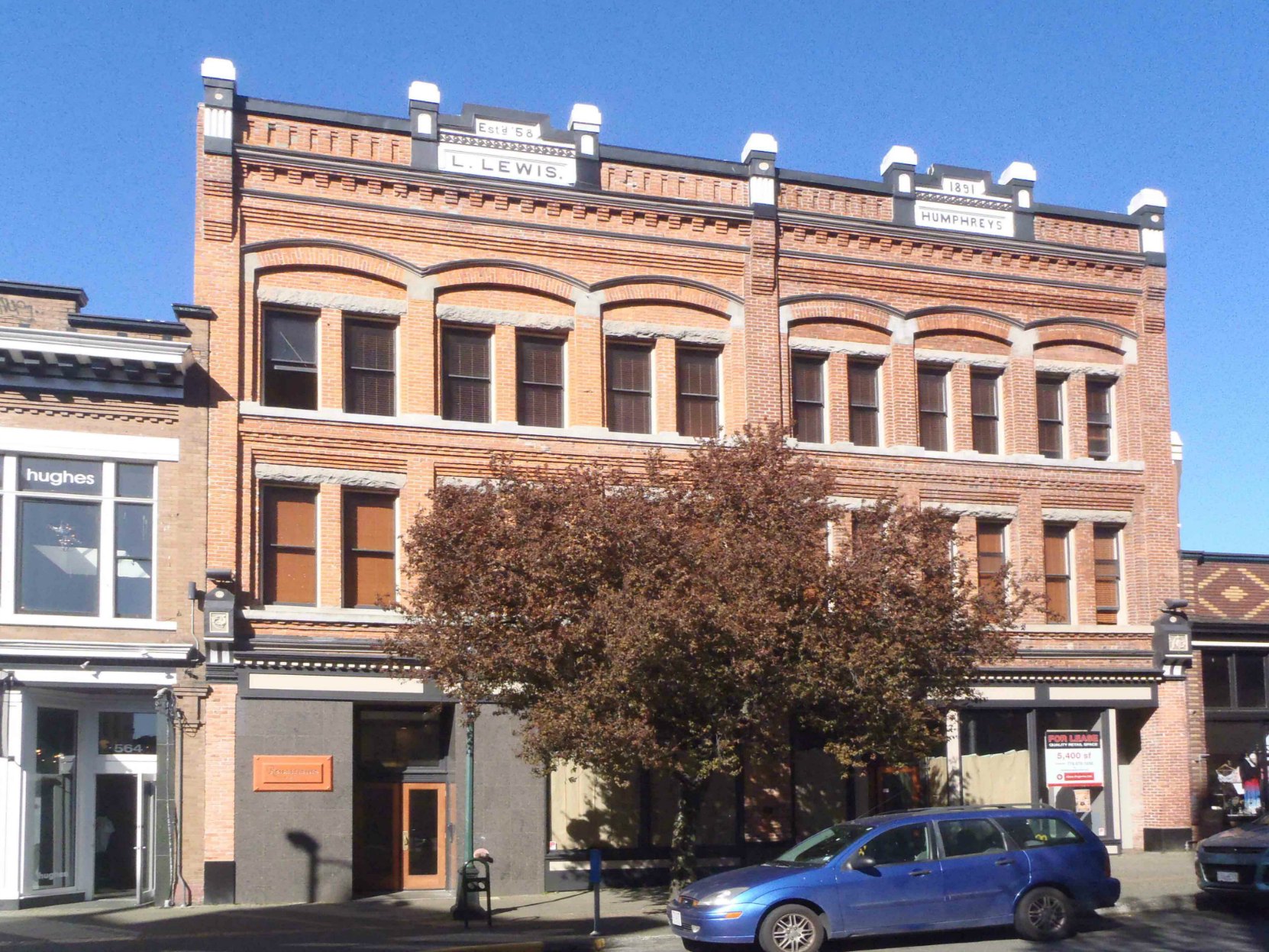
“Another Pioneer Gone – The death occurred last evening at 7:30 of Lewis Lewis of 65 Pandora street, this city. Deceased was born in Kolar, Russian Poland, in 1828. He left home when only nine years of age, and after a few years residence in Germany, emigrated to England, where he remained five years, when he left the latter country and went to New York. Before he had been in that city long news came of the discovery of gold in California, to which place he went by way of Cape Horn in the ship Robert Bone, and arrived at the City of the Golden Gate on August 26, 1849. He came to Victoria with the rush of goldseekers in 1858, and immediately embarked in business, which he successfully carried on until he retired in 1894. Mr. Lewis was a member of the first volunteer fire brigade, was a member of Victoria Lodge, No. 1, I.O.O.F., and a member of the Jewish Congregation Emanu-El, of which he was its president for eight years. He leaves to mourn his loss one son and one daughter (Mrs. E.P. Nathan), besides a large circle of friends. The funeral will take place from his late residence on Wednesday next at 2 p.m.”
(Source: Daily Colonist, 5 July 1904, page 5)
“Pioneer’s Funeral – There was a large attendance at the funeral of the late Lewis Lewis, which took place yesterday afternoon from the Odd Fellows’ hall, Douglas street, at 2 o’clock. The services of the order were solemnized by the several officers, and the Jewish services were conducted by Mr. Salmon. Beautiful flowers were presented and the following acted as pallbearers: Messrs. F. Landsberg, J. Carey, J. Mathews, I. Podeck, W. Whittaker and H.E. Levy.”
(Source: Daily Colonist, 7 July 1904, page 5)
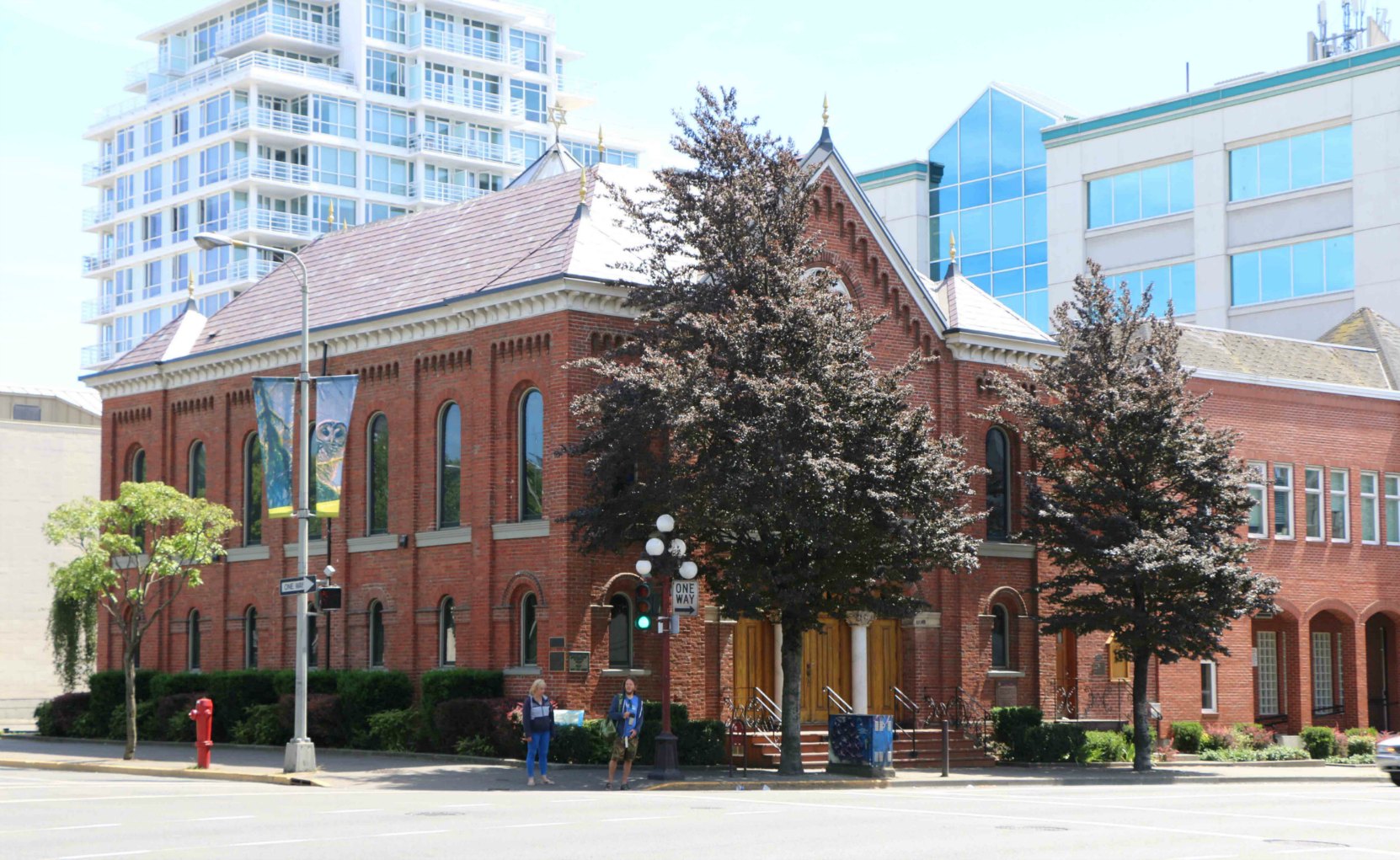
Lewis Lewis is buried in Victoria Jewish Cemetery.
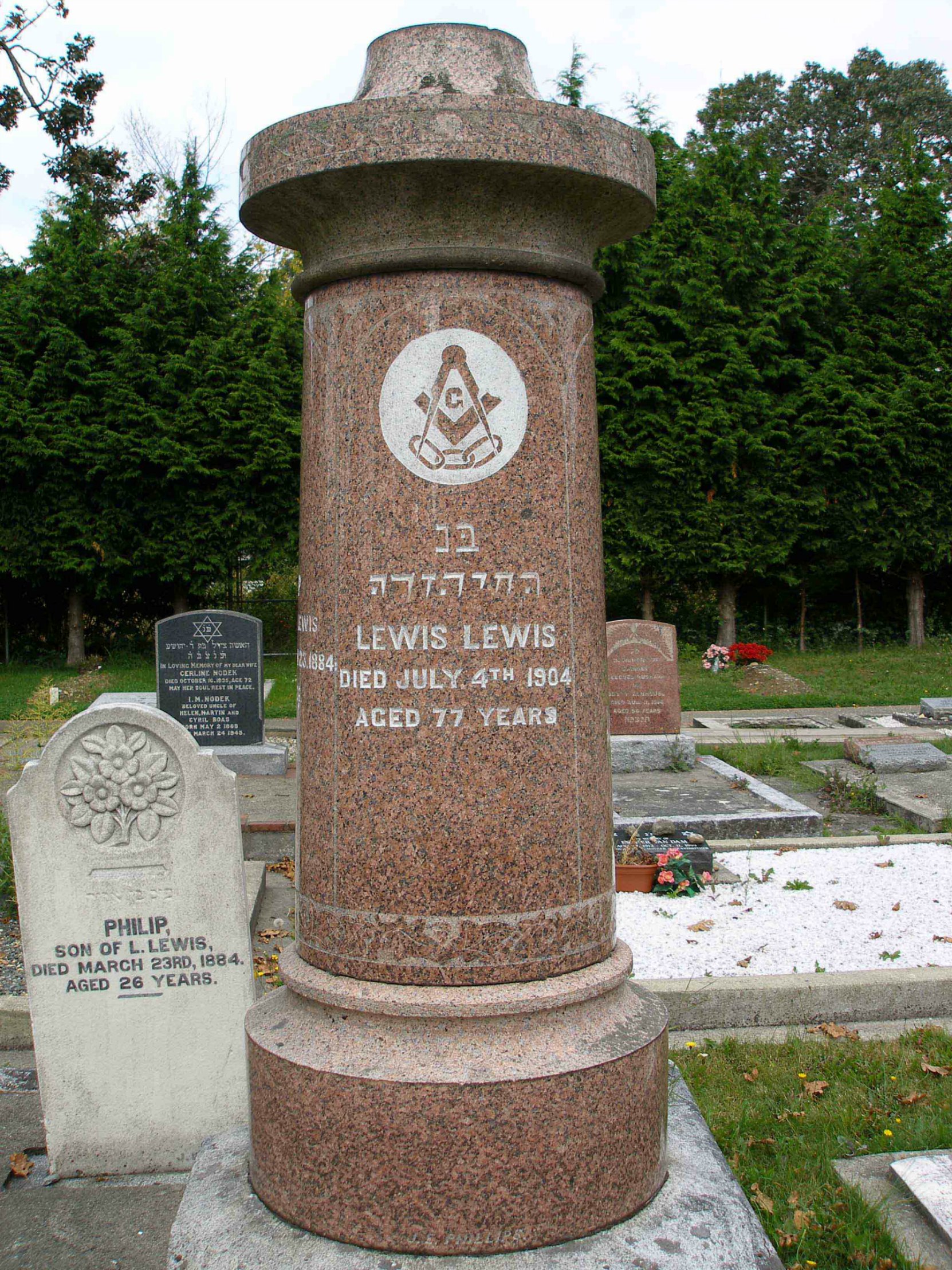
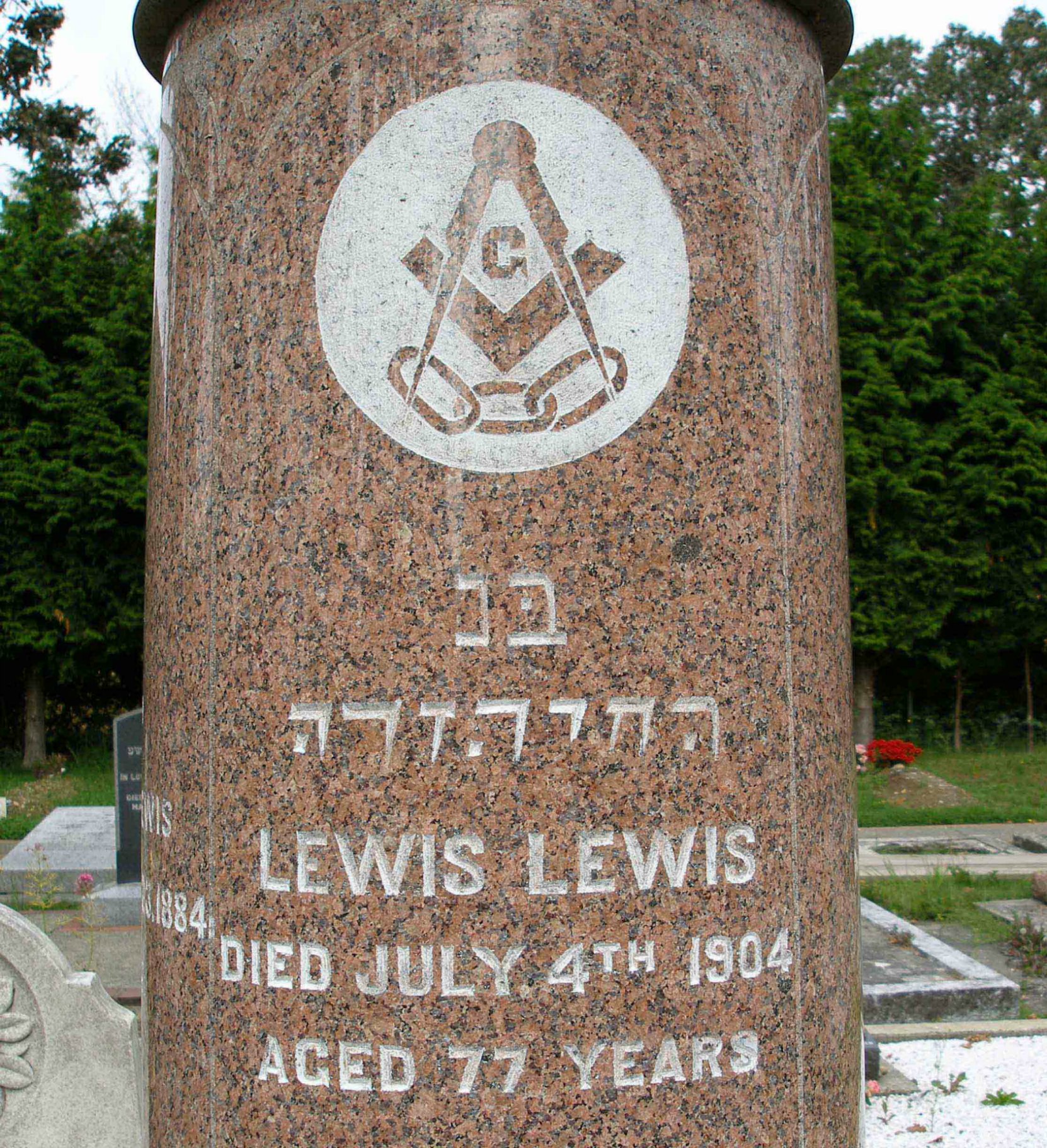
Revised Information About Lewis Lewis from Congregation Emanu-El Historian – February 2018
Lewis Lewis Revised Final version
Lewis Lewis (1828–1904) Plot E-14
Sorting out the truth from fictional accounts of early settlers to Victoria can be difficult because of a lack of documentation. Much of the information available about Lewis Lewis is contradictory, incomplete or, in some instances, false (see below). The following is my best understanding of Lewis Lewis’ biography.
Lewis Lewis was born on June 12, 1828 in the region of the Europe where the borders were fluid; Poland, Russia, Germany. Most sources say that Lewis Lewis’s birthplace was Poland; however Russia/Germany seems to be more accurate. It is also possible that he was taken to London by his uncle when he was nine and educated there.
Lewis Lewis came to New York first and then travelled to San Francisco most likely in 1849. He married Rachael Abraham on November 20, 1855 in San Francisco. Rachael Abraham was a Jewish woman with a British background.
He is listed in a Sacramento city directory in 1851. Eldest child Rosin was born in Sacramento. Lewis Lewis operated dry goods and clothing stores in Sacramento with partners and eventually opened his own shop. According to the local papers in 1858, Lewis Lewis was over $14,000 in debt and filed for bankruptcy. That June, after his legal petition was granted, he left Sacramento for British Columbia.
Some accounts state that Lewis Lewis first became a grocer and then a dry goods merchant in Fort Yale before moving to Victoria in 1861. His name does not appear in the Victoria City Directory until 1863. However, there is documentation that states that his second child, Philip was born in Victoria in 1858. The Victoria City Directory lists Lewis Lewis as a clothier from 1863 to 1891. From 1894 to1897, he is listed as a stove and tin ware merchant, selling kitchen utensils and stoves.
In 1891, almost simultaneously, local landowner Caroline Humphreys and Lewis Lewis commissioned the firm of architects Hooper and Goddard to design and build on 566 and 568 Yates Street. Featuring a Romanesque Revival style, this Victorian-era building is one of the few surviving designs by the partnership of Hooper and Goddard. Originally two separate structures, they are now one building known as the historic Lewis and Humphreys block. Lewis Lewis ran his business on the ground floor and a saloon and hotel operated on the upper floors.
Not only was Lewis Lewis prominent in the business world, he was also heavily involved in many local organizations. He was a member of Victoria’s first volunteer fire brigade and donated money to build the Jubilee Hospital. He was an active member of a number of fraternal organizations. He was a Master Mason in San Francisco, continued his membership while in Sacramento and joined the Lodge in Victoria in 1860. In 1868 he joined the Independent Order of Odd Fellows.
Lewis Lewis took a strong stand against British Columbia joining Canada. In 1868 he signed a petition for the annexation of British Columbia to the United States. In 1870 he opposed the Yale Convention, which favoured BC joining Canada.
Lewis Lewis was very involved in the Jewish community. He was elected trustee of the Hebrew Benevolent Society and was a charter member of the organizing committee to build the synagogue in Victoria. In 1862 he was elected to help solicit subscriptions (pledges) for construction of the building.
There were insufficient funds to hire a rabbi for much of the time that Lewis Lewis was alive, so he and other educated men led the services. In 1865 he was elected treasurer of Congregation (Temple) Emanu-el. The following year the synagogue experienced financial difficulties, and Lewis Lewis served on the committee that gathered the necessary funds to prevent its foreclosure. For a total of eight years, Lewis Lewis served as president of the synagogue. He served from 1869-1870 and then again from 1881-1886. During his second term he presided over another monetary crisis, which required reorganization of the synagogue’s financial affairs.
His wife, Rachael, was a member of the Hebrew Ladies Society. They had two sons and a daughter. Their son Philip died on March 23, 1884, as a result of internal injuries he sustained after falling from a horse. Their son Aaron married Selina Jackson. The couple had one son who himself had no children. Their daughter, Rosina, married Edward Nathan. The couple had 2 daughters. One daughter, Louisa, married Louis Levy, son of Phoebe and Joseph Levy (also buried in this cemetery). This couple had no children. The other daughter, (Louisa’s sister), Rachel married Sam Flash. This couple had children whose descendants live in Seattle, Washington.
Lewis Lewis died in 1904. He was buried beside his son Philip with both Masonic and Jewish rituals with a large group of townspeople in attendance at his funeral.
Myth Busting about Lewis Lewis
Researching the life of Lewis Lewis was a fascinating exercise in sorting through conflicting “facts” to discover some of the truth of his life. Many of the aspects of Lewis Lewis’s life that we thought we knew are not true:
- It is doubtful that Lewis Lewis donated the land for the Jewish Cemetery because:
- According to Sacramento papers, Lewis Lewis received a legal petition for bankruptcy just before he moved to BC.
- Copies of the deed for the cemetery do not contain his name.
- He was a member of the Hebrew Benevolent Society, which formed two committees to establish the Jewish community. The building committee looked after the building of the synagogue, while the other committee was responsible for the Jewish Cemetery. Lewis Lewis was a member of the building committee.
- Minutes of the early Burial Society from 1863 do not include his name. However, Lewis Lewis is recorded in the minutes of the May 13, 1864, meeting as being a member of the committee.
- He was not a founding member of the Masonic lodge in Victoria. He joined it in 1860 after it had already been established.
- Some biographical information claims that Lewis Lewis was a gold prospector, and therefore one of the earliest “Jewish gold seekers.” These sources claim that, when he left New York, gold fever took him to Brazil and later to Peru before he arrived in San Francisco. To date, there is no evidence to support this.
- When and where Lewis Lewis changed his name is still unclear. The family lore which is also a story that is recorded in most accounts of his life, is that when he was asked by a government official (at immigration or at naturalization) about his surname he said ‘Lewis’ and when asked about his name he responded ‘Lewis’. This lead to his name being recorded as Lewis Lewis.
There is a story similar to this one as part of many families explanation about their last names. However, people to the United States were required to present travel documents at the time that they purchased their tickets for passage to the United States. The names shown on those documents were then recorded on the ships manifests, which were available to immigration officers.
Granddaughter Louisa Levy said in an interview that Lewis Lewis was one of four brothers who immigrated to the United States. Two brothers with the last name Lewis went to California, while the other two brothers remained in New York under the name of Jeritsky.
Would you like to leave a comment or question about anything on this page?